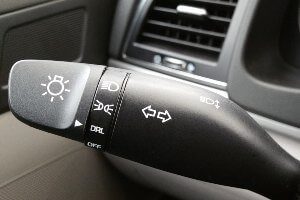 Turn signs make it easier for drivers to inform each other of their intention to change lanes or turn. In some cases, drivers may not use them, leading to a car crash.
Turn signs make it easier for drivers to inform each other of their intention to change lanes or turn. In some cases, drivers may not use them, leading to a car crash.
In this blog, our Appleton car accident lawyers discuss the importance of using turn signals, as well as the types of crashes and liabilities associated with not using a signal.
If you have been injured in an accident caused by someone else’s failure to use a turn signal, you may be eligible for compensation covering injuries and other losses. We have a proven record of helping car crash victims at Sigman Janssen.
Millions recovered. No upfront costs. Call now: (877) 888-5201.
When Drivers Need To Use Turn Signals
There are several situations where drivers are supposed to use their turn signals, such as:
- Making a turn
- Changing lanes
- Merging onto a road or highway
- Entering or exiting a parking lot
- Whenever turning or changing direction
- Before pulling out of a stationary position next to the curb (parallel parking)
Turn signals indicate to others on the road your intentions and allow them to anticipate your actions. For example, if you plan to change lanes on a busy highway, using your turn signal would give the other drivers around you time to slow down or keep their distance. This could prevent a sideswipe collision. Also, signaling before turning at an intersection would alert oncoming traffic to your intentions and help avoid a T-bone collision.
Wisconsin Laws on Turn Signals
In Wisconsin, drivers are required to use turn signals for at least 100 feet before they turn or change lanes. If a driver does not follow these rules, he or she may face stiff penalties, including fines and points on his or her driving record. If a driver’s failure to use turning signals causes a crash, he or she may also be held liable for property damages, physical damages and other related losses.
Types of Crashes and Liability if a Turn Signal Was Not Used
Several types of crashes can occur due to the failure of a driver to use turn signals, such as:
- Rear-end collisions: A rear-end collision occurs when a vehicle’s front end collides with another’s back end. While driving, if the car in front of you suddenly turns without signaling, you might not have enough time to react before crashing into that vehicle. In this scenario, the driver in front of you could be liable for failing to communicate his or her intent to turn.
- Sideswipe collisions: These occur when one side of a vehicle brushes against the side of another. Some drivers might swerve to avoid collisions and crash into another vehicle. Failure to signal could cause a sideswipe collision and the driver who failed to signal might be held liable.
- T-bone collisions: A T-bone collision occurs when a vehicle’s front end collides with another vehicle’s side. These collisions often happen when a driver runs a red light, stop sign or turns without signaling and crosses into oncoming traffic.
Sometimes, another driver could still be partially liable even if a driver failed to use a turn signal. For example, if you did not signal while turning and a car running a red light hit you, the other driver could be liable. In this case, even though you did not use your turn signal, the other driver’s disregard for a red light is negligence.
Proving a Crash Resulted From Not Using a Turn Signal
Establishing that your crash was caused by a driver’s failure to use a turn signal can be challenging. You need substantial evidence to support your claim. Key types of evidence that you would need to gather for your claim, may include:
Witness Testimony
Witnesses who saw the accident and can confirm that the other driver did not use a turn signal would strengthen your case. However, you may have difficulty finding witnesses if no one saw the car crash.
Surveillance or Dashcam Video Footage
Surveillance or dashcam footage could confirm whether the other driver used a turn signal. This evidence provides a clear observation of the other party’s actions before the crash. It could be challenging if you do not have a dash cam or are unsure if the at-fault driver has one. The at-fault driver will most likely not want to reveal dash cam footage if it shows their negligence.
Police Report Documentation
A police report can be an unbiased document sharing what happens during a car crash. This document could include:
- Witness statements
- Statements from both parties
- Description of the vehicle
- Photographs and videos included at the scene.
If You Were Injured in a Wisconsin Accident, Call Sigman Janssen
At Sigman Janssen, we understand the physical, emotional and financial toll an accident can take on you and your family. We are committed to getting you the justice you deserve when the crash was another driver’s fault.
Contact us today for a free consultation and let us help you navigate the complexities of your accident claim. We do not receive compensation unless you do.
Free case review. Call us at (877) 888-5201.